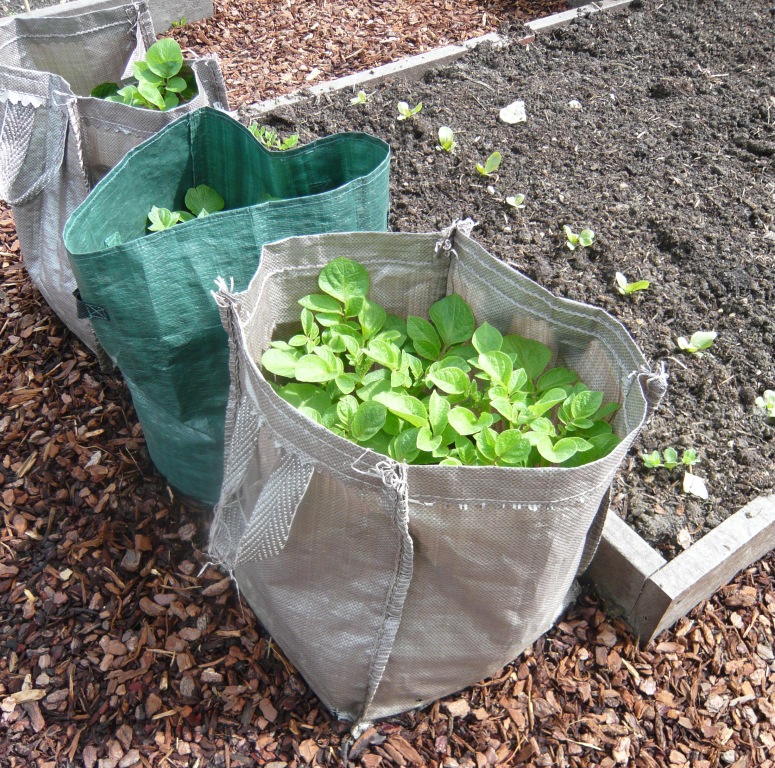Tips for Potatoes in Sacks
I am growing my early potatoes in various containers but these canvas sacks look to me to be a great idea. You can buy specially made potato sacks from seed merchants and garden centres but any large bag can be adapted with enough drainage holes.
Tips and Benefits
- There is virtually no chance of eel worm or soil borne infection if you use clean sacks and fresh or sterilized compost.
- The sacks can be placed where there is spare space increasing your cropping area, particularly useful if ground is scarce.
- These polypropylene sacks drain to avoid soggy conditions yet have space at the top to ‘earth-up’ by adding extra soil.
- All the fertilizer will be focused on the plants.
- Crops are clean and tasty with one plant producing at least enough for a meal for four.
- You can start extra early crops in the greenhouse and move them outside later.
Tips from Experience
- I have used sacks for several years now. The plants need plenty of water as they grow without becoming waterlogged.
- I put 3 spuds in one 2 foot diameter sack.
- Top up with extra soil as the plants surface until the bag is full.
- I mixed in some rotted horse manure this year and the crop benefited and the soil residue was great for the garden.
